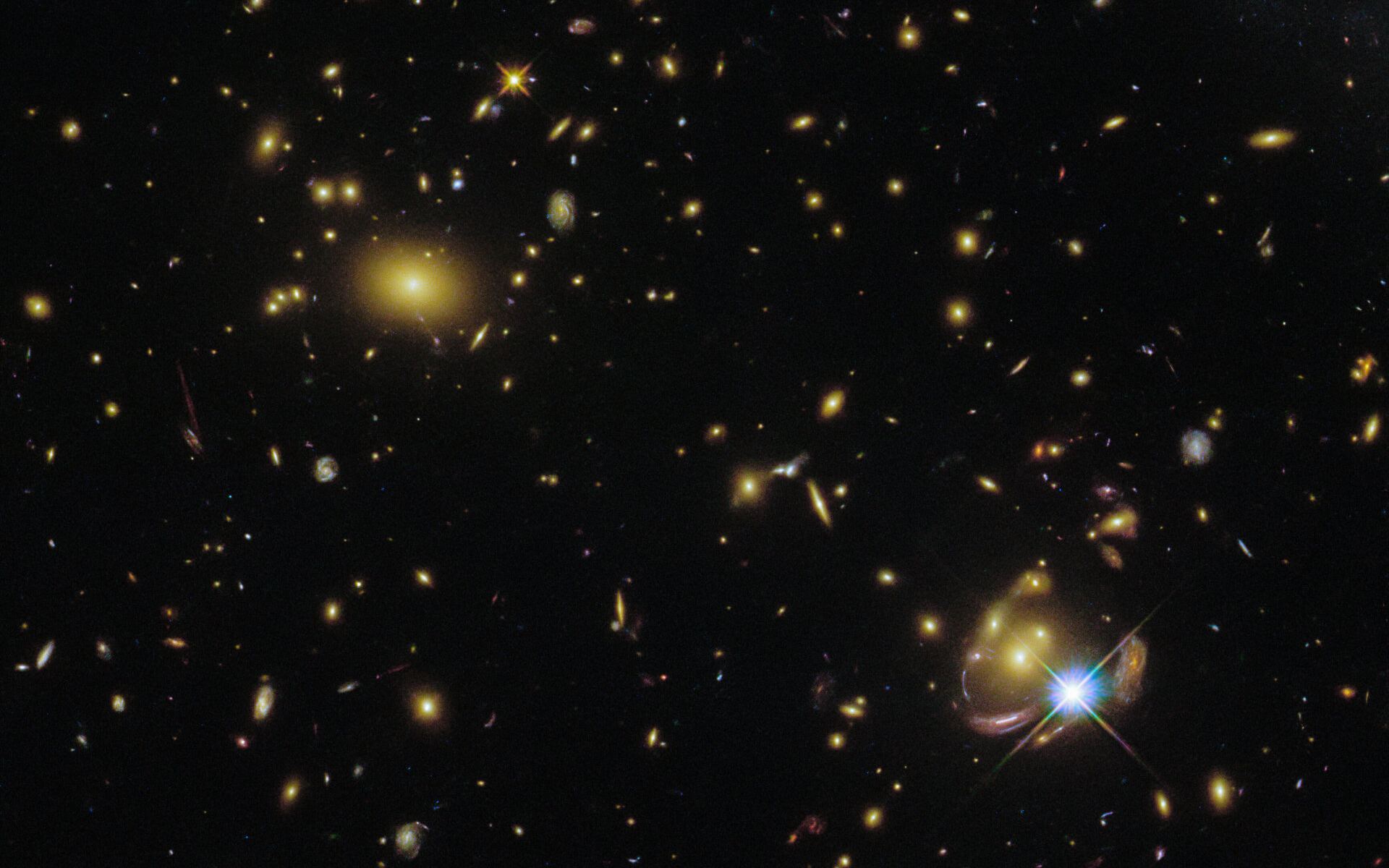
The study of the universe has always captivated humans with its vastness and mysteries. One fascinating phenomenon that has puzzled astronomers for decades is cosmic shear calibration. Cosmic shear refers to the distortion of light that occurs as it travels through the universe, caused by the gravitational pull of massive objects. Understanding and calibrating cosmic shear is crucial for accurate cosmological measurements and gaining insights into the nature of dark matter and dark energy. In this article, we will explore twelve enigmatic facts about cosmic shear calibration that shed light on the intricacies of the universe. From the techniques used to measure cosmic shear to its implications for our understanding of the cosmos, get ready to delve into the captivating world of cosmic shear calibration.
Key Takeaways:
- Cosmic shear calibration helps scientists understand how light from distant galaxies is bent by gravity, revealing secrets about dark matter and dark energy. It’s like using a special lens to see hidden cosmic puzzles!
- By working together and using advanced technology, researchers are getting closer to solving the mysteries of cosmic shear, dark matter, and dark energy. It’s like a cosmic detective mission with telescopes and math!
Unraveling the Cosmic Shear Calibration Mystery
Cosmic shear calibration is a fascinating field of study in astrophysics and cosmology. It involves the precise measurement and correction of distortions caused by weak gravitational lensing in cosmic images. But what exactly is cosmic shear, and why is calibration crucial in understanding the universe?
The Elusive Nature of Cosmic Shear
Cosmic shear refers to the distortion of light caused by the gravitational influence of massive structures such as galaxy clusters and dark matter. It is a subtle effect that can only be observed through statistical analysis of large samples of galaxies. This distortion holds valuable information about the distribution and evolution of cosmic matter.
The Role of Calibration in Accurate Measurements
Calibration plays a vital role in ensuring the accuracy of cosmic shear measurements. It involves calibrating and correcting various instrumental and observational effects, such as optical distortions, atmospheric turbulence, and instrumental noise. Without proper calibration, the true cosmic shear signal may be obscured by systematic errors, leading to inaccurate conclusions.
The Challenges of Cosmic Shear Calibration
Calibrating cosmic shear poses several challenges to researchers. One of the main challenges is distinguishing between the true cosmic shear signal and other sources of image distortion, such as the intrinsic shapes of galaxies. Sophisticated algorithms and statistical techniques are employed to separate these effects and extract the pure cosmic shear signal.
The Quest for Precision and Accuracy
In the pursuit of accurate cosmic shear measurements, scientists are continuously refining calibration techniques. This involves improving the accuracy of instrumental models, developing more sophisticated algorithms for image analysis, and cross-referencing with other cosmological probes to validate findings. The ultimate goal is to reduce uncertainties and increase the precision of cosmic shear measurements.
Cosmic Shear and Dark Energy
The study of cosmic shear calibration has profound implications for our understanding of dark energy. Dark energy is believed to be responsible for the accelerated expansion of the universe, and cosmic shear measurements provide valuable insights into its properties. Accurate calibration is crucial in unraveling the true nature of dark energy and its influence on cosmic structures.
Cosmic Shear Surveys
Large-scale surveys dedicated to cosmic shear measurement have played a pivotal role in advancing our knowledge of the universe. These surveys, such as the COSMOS and the Dark Energy Survey (DES), capture vast amounts of data, allowing researchers to conduct detailed studies of the cosmic shear signal and refine calibration techniques.
Cosmic Shear and Cosmological Models
Calibrating cosmic shear provides crucial constraints for cosmological models. By comparing observations to theoretical predictions, scientists can fine-tune and validate cosmological models, gaining deeper insights into the formation and evolution of cosmic structures and the underlying distribution of dark matter.
International Collaboration in Cosmic Shear Calibration
The study of cosmic shear calibration requires international collaboration among astrophysicists, cosmologists, and statisticians. By pooling resources, expertise, and data from various surveys and experiments, researchers can collectively tackle the complex challenges associated with cosmic shear calibration and advance our understanding of the universe.
Technological Advances in Cosmic Shear Calibration
Technological advancements have greatly enhanced the precision and efficiency of cosmic shear calibration. Advanced telescopes, highly sensitive cameras, and sophisticated image analysis software have revolutionized the field, enabling researchers to conduct large-scale cosmic shear surveys and probe the intricacies of the universe.
Cosmic Shear Calibration and the Future of Astrophysics
The ongoing research in cosmic shear calibration paves the way for new discoveries and breakthroughs in astrophysics. It enhances our understanding of the universe’s composition, its evolution, and the role of dark matter and dark energy. With each calibration improvement, scientists inch closer to unraveling the mysteries of our cosmic existence.
The Promise of Cosmic Shear Calibration
Cosmic shear calibration holds great promise for illuminating the enigmatic nature of our universe. Through continued research, advancements in technology, and international collaboration, scientists are poised to unlock deeper insights into the mysteries of cosmic shear, dark matter, dark energy, and the fundamental workings of our cosmos.
Conclusion
In conclusion, cosmic shear calibration is a fascinating field of study that continues to captivate scientists and researchers alike. The enigmatic nature of cosmic shear and its effects on light from distant galaxies provide valuable insights into the structure and evolution of our Universe. Through meticulous calibration techniques, scientists are able to enhance the accuracy of cosmic shear measurements, leading to a deeper understanding of dark matter, dark energy, and the overall cosmic web.
As technology advances and new techniques emerge, the study of cosmic shear calibration will undoubtedly uncover more mysterious facts and contribute to our ever-expanding knowledge of the Universe. It is an exciting journey that will shed light on the unseen forces that shape the cosmos and pave the way for future discoveries.
FAQs
Q: What is cosmic shear calibration?
A: Cosmic shear calibration is a process where scientists correct for various systematic errors and biases that affect measurements of cosmic shear. It involves reducing uncertainties in the measurements and ensuring accurate and reliable results.
Q: Why is cosmic shear calibration important?
A: Cosmic shear calibration is crucial because accurate measurements of cosmic shear are vital for understanding the distribution and properties of dark matter. It helps shed light on the mysterious phenomenon of dark energy and provides insights into the large-scale structure of the Universe.
Q: How do scientists calibrate cosmic shear measurements?
A: Scientists employ various techniques to calibrate cosmic shear measurements, such as using artificial galaxies with known shapes and properties, analyzing the statistical correlations between galaxy shapes, and comparing data from different telescopes and observations.
Q: What challenges do scientists face in cosmic shear calibration?
A: The challenges in cosmic shear calibration include mitigating the effects of observational noise, accounting for instrumental distortions, dealing with the presence of intrinsic alignments, and understanding the complex interplay between baryonic matter and dark matter.
Q: How does cosmic shear calibration contribute to our understanding of the Universe?
A: By accurately calibrating cosmic shear measurements, scientists can obtain precise measurements of the distribution of matter in the Universe. This, in turn, helps refine cosmological models, unravel the mysteries of dark matter and dark energy, and improve our understanding of the fundamental forces and structure of the cosmos.
Cosmic shear calibration is just one piece of the puzzle when it comes to understanding our enigmatic Universe. Want to explore more mind-bending topics? Dark matter remains one of the most perplexing mysteries in astrophysics, while supercluster complexes showcase the awe-inspiring gravitational lensing effects on a colossal scale. Each of these subjects offers a unique glimpse into the intricate workings of the cosmos, inviting curious minds to delve deeper and unravel the secrets that lie within.
Was this page helpful?
Our commitment to delivering trustworthy and engaging content is at the heart of what we do. Each fact on our site is contributed by real users like you, bringing a wealth of diverse insights and information. To ensure the highest standards of accuracy and reliability, our dedicated editors meticulously review each submission. This process guarantees that the facts we share are not only fascinating but also credible. Trust in our commitment to quality and authenticity as you explore and learn with us.


